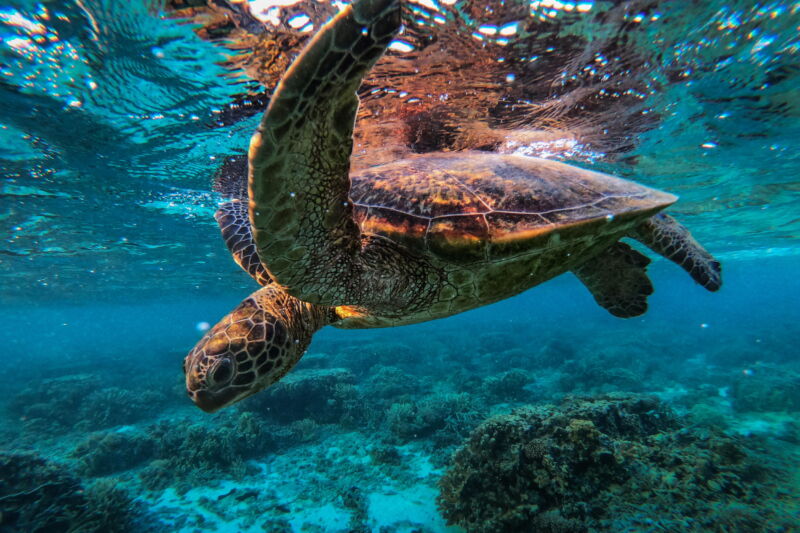
Jonas Gratzer/LightRocket via Getty Images
Humans are driving migratory animals—sea turtles, chimpanzees, lions and penguins, among dozens of other species—towards extinction, according to the most comprehensive assessment of migratory species ever carried out.
The State of the World’s Migratory Species, a first of its kind report compiled by conservation scientists under the auspices of the U.N. Environment Programme’s World Conservation Monitoring Centre, found population decline, a precursor to extinction, in nearly half of the roughly 1,200 species listed under the Convention on Migratory Species (CMS), a 1979 treaty aimed at conserving species that move across international borders.
The report’s findings dovetail with those of another authoritative U.N. assessment, the 2019 Global Assessment Report on Biodiversity and Ecosystem Services, that found around 1 million of Earth’s 8 million species are at risk of extinction due to human activity. Since the 1970s, global biodiversity, the variation of life on Earth, has declined by a whopping 70 percent.
Migratory species face unique and heightened risks because they rely on connectivity among multiple ecosystems spanning national borders and because their predictable migration patterns make them vulnerable to poachers. The State of the World’s Migratory Species, released Monday, found that one in five species on the CMS list is threatened with extinction—and for listed fish, that number is a stark 97 percent.
The report’s authors say the numbers could be even more dire because the CMS treaty, also known as the Bonn Convention, covers only about a quarter of the world’s known migratory species—mammals, birds, reptiles, fish and one insect (the monarch butterfly). To be listed on one of the treaty’s two appendices, the 133 state parties must agree on the listing, and the species must generally either be endangered or have an “unfavorable conservation status.”
The report found that an additional 399 migratory species not covered by the treaty, including carp fish, ground sharks and petrels, also have declining populations and would benefit from CMS treaty protections.
To compile the report, the authors reviewed scientific literature and performed novel analyses using data from sources including the IUCN Red List of Threatened Species, the Living Data Index, the World Database of Protected Areas and CMS technical reports.
Among those analyses was an assessment of key locations where migrations take place. Pinpointing those areas was no easy task. Each year, billions of wild animals embark on journeys across Earth’s land, waters and sky. From troops of mountain gorillas knuckle-walking across central Africa’s rainforests, to monarch butterflies fluttering thousands of miles from North America to Mexico, and giant manta rays winging their way through the oceans, these species travel short and long distances seeking out favorable living conditions, food and places to breed.
The researchers were able to identify 9,500 key locations for CMS species. A little over half of those areas lack protected status while other key locations have yet to be identified.
Amy Fraenkel, executive secretary of CMS, called the report’s findings “startling” and pointed to the myriad of ways that humans and non-human parts of nature depend on migratory species.
As they make their way around the planet, migratory species contribute to the complex web of life on Earth by distributing seeds and nutrients, pollinating plants and controlling other species’ populations. Their loss can change the entire ecology of the ecosystems they inhabit. They also provide human communities with sources of food and income, contribute to overall ecosystem health and provide spiritual and aesthetic value.
Fruit bats, for instance, pollinate flowers and disperse seeds, helping cashew, passionfruit, fig and other fruit and nut trees reproduce. The Andean condor has cultural and spiritual significance for many Indigenous peoples and helps eliminate animal carrion, reducing the risk of disease. And a range of iconic animals like the African elephant and jaguar draw tourists hoping to catch a glimpse of their splendor, supporting local economies.
The report, like other authoritative assessments on Earth’s biodiversity, is unequivocal about what is driving the mass loss of life: the activities of just one species—humans.

